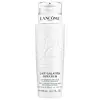What's inside
What's inside
 Key Ingredients
Key Ingredients

 Benefits
Benefits

 Concerns
Concerns

 Ingredients Side-by-side
Ingredients Side-by-side

Water
Skin ConditioningOlea Europaea Fruit Oil
MaskingGlycerin
HumectantDimethicone
EmollientPropylene Glycol
HumectantTriethanolamine
BufferingLimonene
PerfumingIsopropyl Palmitate
EmollientCitrus Aurantium Dulcis Oil
MaskingStearic Acid
CleansingParaffinum Liquidum
EmollientCetyl Alcohol
EmollientGlycine Soja Oil
EmollientCitrus Grandis Peel Oil
MaskingUrea
BufferingAspartic Acid
MaskingParaffin
PerfumingCarbomer
Emulsion StabilisingGlucose
HumectantFructose
HumectantGlyceryl Stearate
EmollientDimethiconol
EmollientSodium Lauroyl Oat Amino Acids
CleansingMyristic Acid
CleansingPalmitic Acid
EmollientAlanine
MaskingSucrose
HumectantVitreoscilla Ferment
Skin ConditioningXanthan Gum
EmulsifyingGlutamic Acid
HumectantDextrin
AbsorbentEthylhexylglycerin
Skin ConditioningHexyl Nicotinate
EmollientHexylene Glycol
EmulsifyingTocopherol
AntioxidantSodium Dehydroacetate
PreservativePhenoxyethanol
PreservativeLinalool
PerfumingCitral
PerfumingParfum
MaskingWater, Olea Europaea Fruit Oil, Glycerin, Dimethicone, Propylene Glycol, Triethanolamine, Limonene, Isopropyl Palmitate, Citrus Aurantium Dulcis Oil, Stearic Acid, Paraffinum Liquidum, Cetyl Alcohol, Glycine Soja Oil, Citrus Grandis Peel Oil, Urea, Aspartic Acid, Paraffin, Carbomer, Glucose, Fructose, Glyceryl Stearate, Dimethiconol, Sodium Lauroyl Oat Amino Acids, Myristic Acid, Palmitic Acid, Alanine, Sucrose, Vitreoscilla Ferment, Xanthan Gum, Glutamic Acid, Dextrin, Ethylhexylglycerin, Hexyl Nicotinate, Hexylene Glycol, Tocopherol, Sodium Dehydroacetate, Phenoxyethanol, Linalool, Citral, Parfum
Water
Skin ConditioningParaffinum Liquidum
EmollientIsopropyl Myristate
EmollientPropanediol
SolventCI 77007
Cosmetic ColorantAnanas Sativus Fruit Extract
Skin ConditioningSodium Hydroxide
BufferingHydroxycitronellal
PerfumingPEG-32
HumectantPEG-60 Hydrogenated Castor Oil
EmulsifyingEugenol
PerfumingSalicylic Acid
MaskingSilica
AbrasiveLinalool
PerfumingBenzyl Alcohol
PerfumingCinnamyl Alcohol
PerfumingPapain
Skin ConditioningCarbomer
Emulsion StabilisingGeraniol
PerfumingDisodium EDTA
Disodium Cocoamphodiacetate
CleansingCitronellol
PerfumingHexyl Cinnamal
PerfumingParfum
MaskingWater, Paraffinum Liquidum, Isopropyl Myristate, Propanediol, CI 77007, Ananas Sativus Fruit Extract, Sodium Hydroxide, Hydroxycitronellal, PEG-32, PEG-60 Hydrogenated Castor Oil, Eugenol, Salicylic Acid, Silica, Linalool, Benzyl Alcohol, Cinnamyl Alcohol, Papain, Carbomer, Geraniol, Disodium EDTA, Disodium Cocoamphodiacetate, Citronellol, Hexyl Cinnamal, Parfum
Ingredients Explained
These ingredients are found in both products.
Ingredients higher up in an ingredient list are typically present in a larger amount.
Carbomer is a polymer of acrylic acid. Its main role is to create a gel consistency.
A high amount of carbomer can cause pilling or balling up of products. Don't worry, most products contain 1% or less of carbomer.
Linalool is a fragrance and helps add scent to products. It's derived from common plants such as cinnamon, mint, citrus, and lavender.
Like Limonene, this ingredient oxidizes when exposed to air. Oxidized linalool can cause allergies and skin sensitivity.
This ingredient has a scent that is floral, spicy tropical, and citrus-like.
Learn more about LinaloolParaffinum Liquidum is also known as liquid paraffin. It is a type of highly refined mineral oil.
Like other oils, Paraffinum Liquidum has emollient properties. Emollients help soothe and soften the skin. By creating a barrier to trap moisture within, emollients help keep your skin hydrated.
Paraffinum Liquidum does not irritate the skin and is non-comedogenic.
Learn more about Paraffinum LiquidumParfum is a catch-all term for an ingredient or more that is used to give a scent to products.
Also called "fragrance", this ingredient can be a blend of hundreds of chemicals or plant oils. This means every product with "fragrance" or "parfum" in the ingredients list is a different mixture.
For instance, Habanolide is a proprietary trade name for a specific aroma chemical. When used as a fragrance ingredient in cosmetics, most aroma chemicals fall under the broad labeling category of “FRAGRANCE” or “PARFUM” according to EU and US regulations.
The term 'parfum' or 'fragrance' is not regulated in many countries. In many cases, it is up to the brand to define this term.
For instance, many brands choose to label themselves as "fragrance-free" because they are not using synthetic fragrances. However, their products may still contain ingredients such as essential oils that are considered a fragrance by INCI standards.
One example is Calendula flower extract. Calendula is an essential oil that still imparts a scent or 'fragrance'.
Depending on the blend, the ingredients in the mixture can cause allergies and sensitivities on the skin. Some ingredients that are known EU allergens include linalool and citronellol.
Parfum can also be used to mask or cover an unpleasant scent.
The bottom line is: not all fragrances/parfum/ingredients are created equally. If you are worried about fragrances, we recommend taking a closer look at an ingredient. And of course, we always recommend speaking with a professional.
Learn more about ParfumWater. It's the most common cosmetic ingredient of all. You'll usually see it at the top of ingredient lists, meaning that it makes up the largest part of the product.
So why is it so popular? Water most often acts as a solvent - this means that it helps dissolve other ingredients into the formulation.
You'll also recognize water as that liquid we all need to stay alive. If you see this, drink a glass of water. Stay hydrated!
Learn more about Water